
Josephine Clifton (1813?-1847) was a stage actress who became known as "the first American actress to star in London".

Josephine Clifton (1813?-1847) was a stage actress who became known as "the first American actress to star in London".
The early years of Josephine Clifton seem to be lost, what little information exists is controversial. Most historians believe she was born in New York and her surname was Miller, others think she may have come from Philadelphia. [1]
In the fall of 1831, Clifton met Thomas Hamblin, actor and manager of the Bowery Theater. He was well known for his philandering ways, so although she had no acting experience and because she was a great beauty, Hamblin made her his protegee and gave her the "beautiful ingenue" role in many of his productions. On September 21, 1831, she made her debut as Belvidera in Venice Preserved. [2] She was Elvira in Pizarro and played Lady MacBeth. She moved to the Park Theatre to play Bianca in Fazio .

Around 1834, amidst rumors of affairs, Clifton moved to London where she appeared at Drury Lane and became "the first American actress to star in London." [3] She returned to New York where in 1836, Epes Sargent wrote a five-act play, The bride of Genoa, for her which was successfully produced by the Tremont Theatre. She then performed her most famous role, the title part in Bianca Visconti, based on the career of Francesco I Sforza. [4] This play was written for her by Nathaniel Parker Willis in 1837, when he won the $1000 prize in a contest given by her for the best blank verse tragedy to suit her talents. [5]
She spent some of her later years in Philadelphia where she often played opposite the actor Edwin Forrest. In 1846, she married Robert Place, the manager of the American Theater in New Orleans, but she died unexpectedly the next year. [6] After her death it was reported that her relationship with Forrest had been much more than professional, and Clifton was named as a factor during Forrest's notorious divorce. [1]

The Tragedy of Hamlet, Prince of Denmark, often shortened to Hamlet, is a tragedy written by William Shakespeare sometime between 1599 and 1601. It is Shakespeare's longest play, with 29,551 words. Set in Denmark, the play depicts Prince Hamlet and his attempts to exact revenge against his uncle, Claudius, who has murdered Hamlet's father in order to seize his throne and marry Hamlet's mother. Hamlet is considered among the "most powerful and influential tragedies in the English language", with a story capable of "seemingly endless retelling and adaptation by others". It is widely considered one of the greatest plays of all time. Three different early versions of the play are extant: the First Quarto ; the Second Quarto ; and the First Folio. Each version includes lines and passages missing from the others.

Dionysius Lardner "Dion" Boucicault was an Irish actor and playwright famed for his melodramas. By the later part of the 19th century, Boucicault had become known on both sides of the Atlantic as one of the most successful actor-playwright-managers then in the English-speaking theatre. The New York Times hailed him in his obituary as "the most conspicuous English dramatist of the 19th century,"; he and his second wife, Agnes Robertson Boucicault, applied for and received American citizenship in 1873.
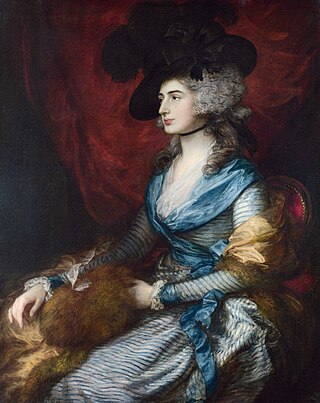
Sarah Siddons was a Welsh actress, the best-known tragedienne of the 18th century. Contemporaneous critic William Hazlitt dubbed Siddons as "tragedy personified".

John Brougham was an Irish and American actor, dramatist, poet, theatre manager, and author. As an actor and dramatist he had most of his career in the United States, where he was celebrated for his portrayals of comic Irish characters.
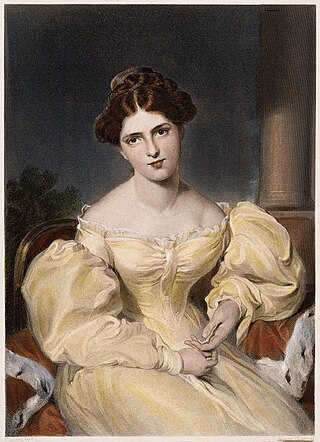
Frances Anne "Fanny" Kemble was a British actress from a theatre family in the early and mid-19th century. She was a well-known and popular writer and abolitionist whose published works included plays, poetry, eleven volumes of memoirs, travel writing, and works about the theatre.
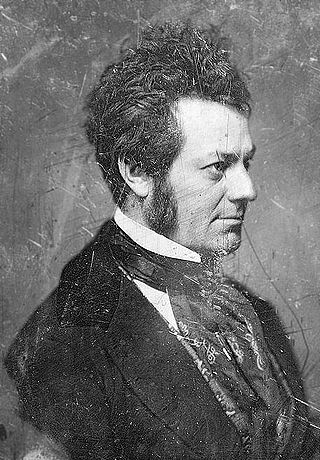
Edwin Forrest was a prominent nineteenth-century American Shakespearean actor. His feud with the British actor William Macready was the cause of the deadly Astor Place Riot of 1849.

The Bowery Theatre was a playhouse on the Bowery in the Lower East Side of Manhattan, New York City. Although it was founded by rich families to compete with the upscale Park Theatre, the Bowery saw its most successful period under the populist, pro-American management of Thomas Hamblin in the 1830s and 1840s. By the 1850s, the theatre came to cater to immigrant groups such as the Irish, Germans, and Chinese. It burned down four times in 17 years, a fire in 1929 destroying it for good. Although the theatre's name changed several times, it was generally referred to as the "Bowery Theatre".

Thomas Souness Hamblin was an English actor and theatre manager. He first took the stage in England, then immigrated to the United States in 1825. He received critical acclaim there, and eventually entered theatre management. During his tenure at New York City's Bowery Theatre he helped establish working-class theatre as a distinct form. His policies preferred American actors and playwrights to British ones, making him an important influence in the development of early American drama.
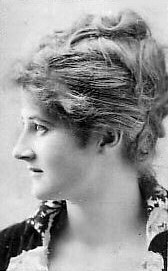
Mary Anderson was an American theatre actress.

Thomas Wignell was an English-born actor and theatre manager in the colonial United States.
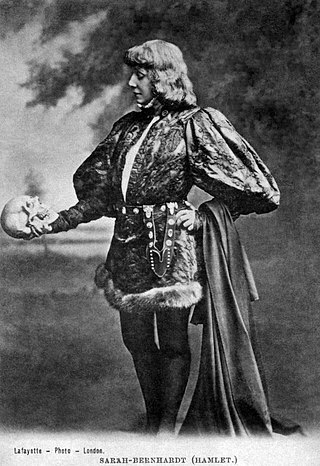
Theatre or theater is a collaborative form of performing art that uses live performers, usually actors or actresses, to present the experience of a real or imagined event before a live audience in a specific place, often a stage. The performers may communicate this experience to the audience through combinations of gesture, speech, song, music, and dance. It is the oldest form of drama, though live theatre has now been joined by modern recorded forms. Elements of art, such as painted scenery and stagecraft such as lighting are used to enhance the physicality, presence and immediacy of the experience. Places, normally buildings, where performances regularly take place are also called "theatres", as derived from the Ancient Greek θέατρον, itself from θεάομαι.

Clara Fisher was a British prodigy who, at the age of six, began performing on the London stage in 1817. Ten years later, she made her New York debut in 1827. Her acting career lasted for 72 years and in her later life she was commonly called "the oldest living actress".
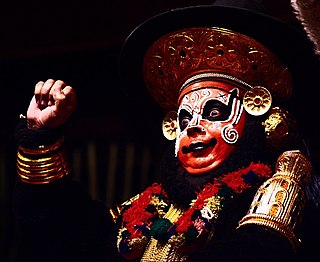
The history of theatre charts the development of theatre over the past 2,500 years. While performative elements are present in every society, it is customary to acknowledge a distinction between theatre as an art form and entertainment, and theatrical or performative elements in other activities. The history of theatre is primarily concerned with the origin and subsequent development of the theatre as an autonomous activity. Since classical Athens in the 5th century BC, vibrant traditions of theatre have flourished in cultures across the world.
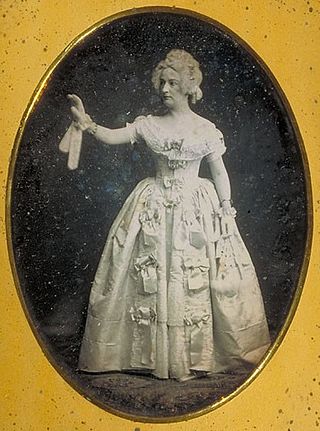
Catherine Norton Sinclair (1817–1891) was an actress-manager who worked with such notable actors as Junius Brutus Booth, Edwin Booth, and Laura Keene. Her sensational divorce from Edwin Forrest captivated the American public in the mid-1800s.

The Gladiator is a tragic melodrama in five acts written by Robert Montgomery Bird originally starring Edwin Forrest. It first premiered on September 26, 1831, at the Park Theatre in New York City.

The Broadway Theatre, called the Old Broadway Theatre since its demise, was at 326–30 Broadway, between Pearl and Anthony Streets in Lower Manhattan, New York City. With over 4000 seats, it was the largest theater ever built in New York when it opened. During its brief existence, many prominent performers of the era appeared on its stage. It presented plays, opera, ballet, hippodrama, and circus performances in a space that was reconfigured several times. The operators always struggled to make money, however, and after twelve years the Broadway Theatre was replaced by a more profitable building, for the textile trade.
Louisa Medina (c.1813–1838), also known as Louisa Honore de Medina, Louisa Medina Hamblin, and the nickname Louisine, was a playwright and literary figure in New York City between the years 1833 and her death. She wrote poems, short stories, and approximately 34 melodramas of which only 11 remain extant. She is mostly known for adapting dramatic versions of Edward Bulwer-Lytton'sLast Days of Pompeii (1835) and Ernest Maltravers (1838), and Robert Montgomery Bird'sNick of the Woods (1838), among others. In an era when successful plays typically ran 3-4 nights, Last Days of Pompeii set a record by running for twenty-nine days. This was the earliest known example of a "long run" for a play, a technique which became regularly used by Thomas Hamblin. Medina is also accredited as the first women in American Theatre to earn her living exclusively as a dramatist. Louisa Medina's progressive inclinations concerning her education and self-reliance marks her as an indicator of the rise of First-Wave Feminism in America.

Elizabeth Ponisi Wallis, née Hansom or Hanson, known throughout her career as Madame Ponisi, was an English-American actress.

Alice Oates was an actress, theatre manager and pioneer of American musical theatre who took opéra bouffe in English to all corners of America. She produced the first performance of a work by Gilbert and Sullivan in America with her unauthorised Trial by Jury in 1875, the first American production of The Sultan of Mocha (1878) and an early performance of H.M.S. Pinafore (1878).

Frances Brett Hodgkinson (1771–1803) was an English-born American theater actress. She played major roles in high comedy and tragedy plays and was also a noted performer of opera. She was the second wife of John Hodgkinson, a famous American stage actor.